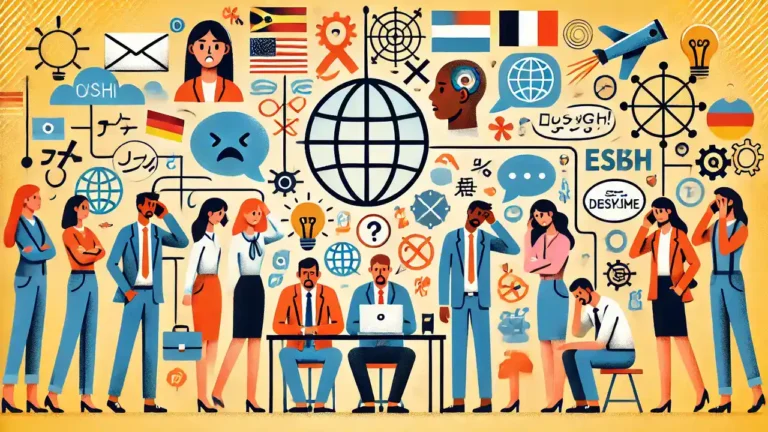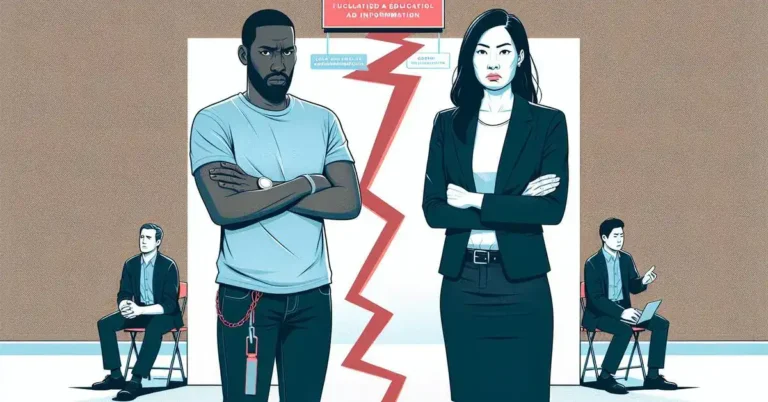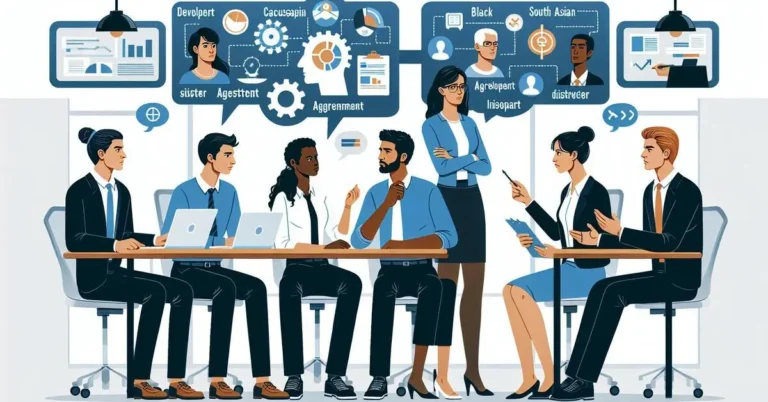Serious Perceptual Barriers to Communication
Have you ever walked away from a conversation feeling completely misunderstood? This often happens because of perceptual barriers to communication. These barriers act like invisible walls, distorting messages and causing misunderstandings in both personal and professional life. Recognizing perceptual barriers to communication is the first step toward building stronger relationships and clearer conversations.
These barriers stem from individual experiences, biases, cultural differences, and even the environment around us. The good news is, you can learn to spot these barriers and use practical tools to prevent misunderstandings. Let’s break down why perceptual barriers occur and what you can do to build clearer, stronger connections.
What Are Perceptual Barriers in Communication?
Perceptual barriers are obstacles that distort or block the messages shared between people. Unlike physical barriers (like noise or distance), perceptual obstacles come from within—the mind, emotions, and previous experiences of each person involved. Imagine you’re in a meeting, and a team member’s suggestion sounds harsh to you, even though they intended to be helpful. Your interpretation is colored by your own background, expectations, or even your mood that day.
Every individual brings a unique “filter” to communication. These filters are shaped by upbringing, culture, beliefs, and previous interactions. As a result, two people can hear the exact same message and walk away with completely different impressions. The process of selecting, organizing, and interpreting information—known as the perception process—plays a huge role in shaping how messages are received.
The Perception Process in Communication
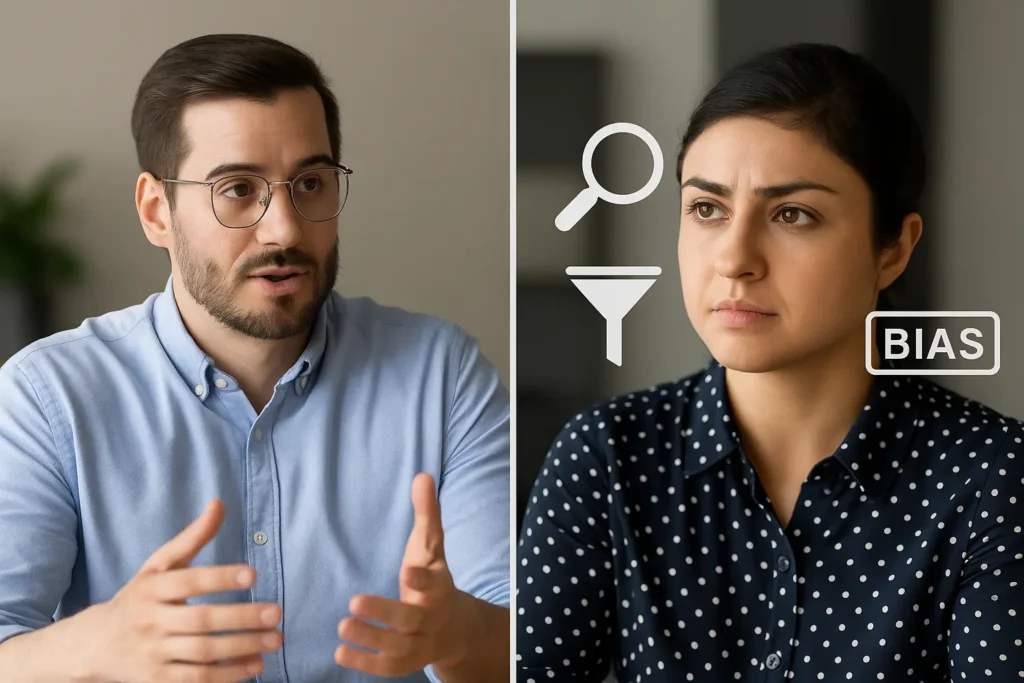
Every act of communication involves the perception process. This process has several stages, and each one can introduce perceptual barriers to communication:
- Selective Attention: Our brains pick and choose which details to notice, often ignoring things that don’t fit our expectations.
- Interpretation: We use our memories, cultural background, and emotional state to make sense of what we hear or see.
- Retention: We remember information that matches our beliefs or feelings and may forget the rest.
Because of this process, even a simple conversation can lead to confusion if perceptual barriers to communication are at play. Imagine a team meeting where everyone hears the same announcement. Some team members feel excited, while others feel threatened. The content was the same, but the perceptual barriers to communication made the difference.
Types of Perceptual Barriers to Communication
Perceptual barriers come in many forms. Understanding these types helps you spot problems early and respond with more clarity.
Stereotyping
Stereotyping means making judgments about someone based on group identity or appearance. For instance, assuming an older colleague isn’t tech-savvy or a younger team member lacks experience. These perceptual barriers to communication can stop us from seeing people’s true skills and intentions, creating unfairness and resentment.
Selective Perception
Selective perception happens when you focus on details that match your beliefs, while ignoring anything that contradicts them. This filter is especially strong in the workplace, where people may interpret feedback or ideas based on pre-existing opinions. For instance, a manager might dismiss a suggestion from a team member they see as “difficult,” missing out on valuable input.
First Impressions
First impressions form within seconds and can be difficult to shake. Once an opinion is set, every action or word from that person is interpreted through that lens. This bias can affect everything from hiring decisions to collaboration, often limiting growth and creativity.
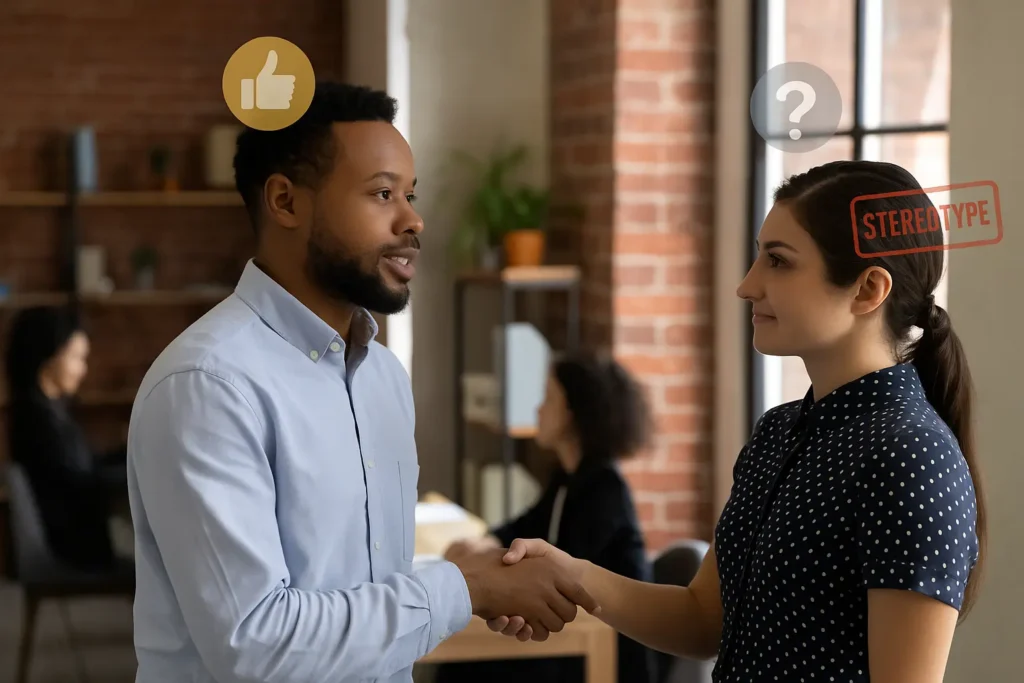
Attribution Errors
Attribution errors occur when you misjudge the reasons for someone’s behavior. If a coworker is quiet in meetings, you might assume they’re disinterested, when they may just be nervous or processing information differently. These mistakes lead to misunderstandings and unnecessary conflict.
Projection
Projection happens when you assume others share your feelings, motives, or priorities. For example, if you value direct communication, you might view a colleague’s indirect approach as dishonest, even if their intentions are positive.
Perceptual Defense and Filtering
Perceptual defense means blocking out messages that cause discomfort or challenge your beliefs. Filtering occurs when someone only shares information that fits their narrative, whether intentionally or not. Both create significant gaps in understanding.
Status Differences and Power Dynamics
Authority and status can impact perception. Employees might filter their feedback to a manager, while leaders may unintentionally ignore input from junior staff. These imbalances can breed frustration and silence valuable voices.
Cultural Perception Differences
Cultural background strongly shapes what people notice and how they interpret messages. In some cultures, direct eye contact signals respect; in others, it’s seen as disrespectful. A single gesture or word can have different meanings around the world, leading to unintentional offense or confusion.
Psychological Roots of Perceptual Barriers to Communication
Why do these barriers form in the first place? Human brains love shortcuts. We rely on past experiences and emotions to process new information quickly. But these shortcuts introduce bias, leading to perceptual barriers to communication:
- Confirmation Bias: Tuning in to details that match our beliefs and tuning out what doesn’t.
- Fundamental Attribution Error: Blaming people’s character for their actions, but blaming our own actions on outside circumstances.
- Emotional Triggers: Anger, stress, or fear cloud our ability to hear clearly.
- Mirror Neurons: We tend to “mirror” the feelings and body language of others, sometimes reinforcing misunderstanding.
Understanding these mental habits is crucial for overcoming perceptual barriers to communication.
The Impact of Perceptual Barriers
The consequences of unchecked perceptual barriers can be far-reaching. In the workplace, these barriers slow collaboration, increase conflict, and limit innovation. Teams miss out on good ideas, and morale suffers when employees feel misunderstood or undervalued.
On a personal level, relationships may suffer when people feel they aren’t truly heard or respected. Misunderstandings breed resentment and can cause lasting damage, even when no one intends harm.
When businesses or leaders ignore perceptual barriers, the effects may include higher turnover, lost revenue, and missed opportunities.
Perceptual Barriers in Everyday Life
Perceptual barriers don’t just appear in offices—they’re everywhere. In schools, students may be labeled as “troublemakers” based on one incident, affecting their future opportunities. In healthcare, a doctor’s assumptions about a patient’s background can influence diagnosis and treatment. Customer service teams can lose clients if they misinterpret feedback or tone.
Even within families, perceptual errors lead to misjudged intentions or feelings. Small misunderstandings can snowball into major arguments when people assume instead of clarify.
How to Overcome Perceptual Barriers to Communication
Anyone can learn to minimize perceptual barriers. The following strategies will help build clearer communication and better relationships in all areas of life.

Practice Active Listening
Active listening means focusing entirely on the speaker, withholding judgment, and clarifying what you’ve heard. Try paraphrasing: “So you’re saying that…” or “Let me make sure I understand.” This simple technique prevents misinterpretations before they grow into conflict.
Cultivate Empathy
Empathy means making a real effort to see things from another person’s perspective. Ask open-ended questions, such as, “Can you tell me more about what you meant?” and listen for emotions behind the words. This approach builds trust and opens doors to honest conversation.
Seek Clarification
Never assume your first interpretation is correct. If something is unclear, ask directly for more information or examples. This habit will reduce confusion and demonstrate respect for the other person’s perspective.
Embrace Diverse Communication Styles
People express themselves differently. Some prefer direct feedback; others use more indirect language. Encourage your team or family to use the method that works best for them—whether it’s speaking, writing, or using visual aids. This flexibility makes everyone feel included.
Reflect on Personal Biases
Regularly consider how your own beliefs or emotions might be shaping your perceptions. Self-awareness is a lifelong skill and grows with honest reflection or feedback from others. Many organizations now offer training on emotional intelligence and unconscious bias to help teams communicate more fairly.
Use Perception-Checking Techniques
Pause before reacting and check your understanding. A simple phrase like, “Here’s what I think I heard—did I get that right?” can stop a misunderstanding in its tracks. Perception-checking is especially valuable in stressful or fast-paced situations.
Build Feedback Loops
Encourage regular, open feedback in teams and relationships. When people feel safe to share how they interpret messages, hidden barriers come to light and can be addressed early.
Consider Organizational Culture
Workplaces with open, respectful cultures are less likely to suffer from harmful perceptual barriers. Leaders should set the tone by listening well, asking for input from all levels, and creating an environment where everyone’s perspective counts.
Mindfulness and Self-Assessment
Mindfulness techniques—like pausing to notice your emotions or reactions—can reduce knee-jerk responses. After meetings or important conversations, ask yourself: Did I make assumptions? Did my emotions color my interpretation? Self-assessment tools, including brief quizzes, can help identify patterns and areas for growth.
Conclusion
Perceptual barriers to communication are everywhere—but they don’t have to control your relationships. When you know how to spot selective attention, bias, and filtering, you can choose tools and habits that keep misunderstandings in check. Clear communication grows from active listening, empathy, self-reflection, and regular feedback. When you challenge your assumptions and make room for diverse viewpoints, you build stronger, more rewarding connections at work, at home, and in the community.
f you’re looking to overcome more barriers in communication, check out our complete resource on barriers of communication for practical guides and additional tips.




